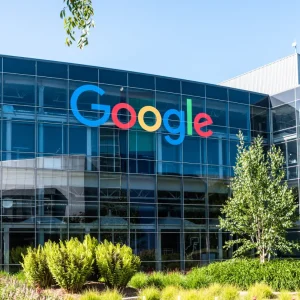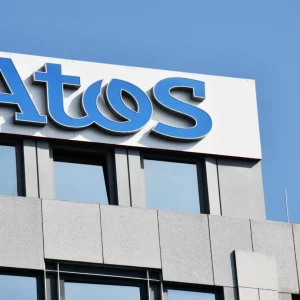John O’Connell, EG Solutions.
Having been an investor, chair and mentor to a raft of software firms since Staffware was sold to Tibco, he’s now taken the reins as CEO of another British firm, EG Solutions, which offers back-office optimisation primarily to financial services firms.I caught up with him to find out why it is EG Solutions that he has chosen to lead.
How would you describe what EG Solutions’ technology offers?
If you think of any office process, like applying for a mortgage, there are clearly a number of steps, often from paper-based to online. It has to go through approvals, credit checks, and so on. What might look prima facie a pretty simple operation can be quite complex. And on top of which, if you made a marketing claim that you turn around applications in a heartbeat, then clearly you’ve got to do that. And there are regulatory requirements too to show that you’ve done things appropriately, for instance knowing your customers.
These steps are recorded, often in no more than a handbook. What EG technology does is look at those steps and see which ones could be eliminated without any loss of efficiency or service, and also start to time each one, to figure out what best practice is, and why. Why are some steps inefficient? It might just be that someone’s being lazy, but more often than not they haven’t got the right information at the right time. The software drives the process, tells the agents what should be done next and how long they should be taking, and provides management with a dashboard. Some companies will then reflect achievement of best practice in staff in their pay packets. Conceptually, it’s applying mass production-line techniques to the office.
You were already non-executive chairman. What led to you taking the reins as CEO?
I had been encouraged by the fact that Elizabeth [Gooch, EG Solutions founder and former CEO] had signed this contract in January [for Aspect to become an investor, strategic partner and exclusive distributor in certain geographies]. Therefore I was more convinced that the goal for global domination was more realistic, especially as she said that she wanted me to help get some ex-top-guns from my Staffware and other days. The business was nicely balanced between Aspect on the one hand, and our own efforts primarily in EMEA. We were no longer like a one-clubbed golfer.
What have you done since?
We hired a new COO, which was a newly created role, in May, and a sales director in September. Both ex-top-guns of mine. At the same time, Elizabeth said seeing how you operate, would you mind leading the business forward because you’ve done it before. As the major shareholder, Elizabeth’s goal is obvious – and she realised she didn’t have to be the CEO to achieve that.
The COO and sales director are now ensconced, working very positively. They did their own due diligence and everything they have seen internally has been better than what they saw when they were doing their due diligence. The product is fantastic, it’s undoubtedly – in our humble opinion – the best in the market because it has had all this investment over many years with a dedicated team.
Frankly it’s a better product than Staffware ever was. Staffware was a complex piece of technology that you could adapt to suit any particular process. Mortgage application processing, complaints processing and so on. But you had to do it, and integrate it with all the other technologies that exist in a large organisation.
The EG solution is much more out of the box, so the benefits that the customer can get, rapidly delivered in typically an eight to twelve-week cycle. And the company guarantees benefits after an appropriate study of at least 20%. How can it do that? Because it knows what it’s doing and as well as the technology being great, the intellectual content of the consultants that EG has will actually tell people how to run their back office.
And the levels of customer satisfaction are huge, way better than Staffware had. Its focus has been less on growth and more on doing the right things. Ideally, you can do both, and find the right balance.
Elizabeth Gooch had been leading it for quite a while – 25 years – in which time it has had its fair share of ups and downs…
If you look at it in objective terms, its current market cap is about £13m, on revenues of about £5m, and losses, the market cap is not bad frankly given those parameters. So there’s a great deal of hope already in the valuation, and some very loyal institutional holders. But you can’t just have promise, you need delivery and promise. Hence her approaching me really to get the sales engine up and running to complement the Aspect deal.
I took quite a bit of persuading [laughs]. But I was persuaded for a number of reasons. Opta [another company that O’Connell was chairing] had just been sold so I was kind of flushed with the after-glow there, and I had just engineered another MBO for another company, so I had a bit of a window in my diary. I guess also conceit [laughs]. But the desire to create some more champions in the UK is a driver for me.
I’m very active with a Livery Company just around the corner from here, the Information Technologists Company, and we’ve got a mentoring scheme for entrepreneurs in technology. I initiated an awards dinner in 2011, trying to make it the ‘Oscars’ for IT entrepreneurs. This year I had Mike Lynch, Mark Lancaster of SDL, Mike Tobin of Telecity, handing out awards to young entrepreneurs. We had 250 people at the black-tie dinner. That’s something I will definitely continue with. It also keeps me networked at many levels.
You must believe that there is scope for growth in the back office optimisation space?
The figures I have seen suggest there are three times as many workers in the back office than in the front office. If the front office automation market is about $1bn, then this potentially is a $3bn market. The only question is, what might be the rate of adoption.
Is it the right category to be in though – presumably Gartner doesn’t do a Magic Quadrant for back office optimisation?
You don’t want the market to be too big, because it would out-pace us. I think realistically the company can grow at a very high rate. We’re already talking to three of the world’s largest banks, one of whom has 70,000 people in one region alone, offshore. In fact, to some extent, this technology can reduce the huge flow of jobs coming out of the UK, because technology can solve it. It can help companies to win back market share. If you can get productivity gains of 20- to 30% you can do far more with the same people.
EG has been predominantly in the financial services market – 90-95%. Is that where you intend to put most of your focus?
There was a breakthrough earlier this year announced with Npower. It’s just signed off a 30% productivity gain as a result of this project. We’re talking to others too. Another interesting client we’ve worked with has used technology we have rights to, to steal time from the front office to help with the back office. This is the concept of the ‘blended office’. One outsourcer, BHG, has just implemented a system for 1,000 users that ‘steals time’ — my words – from the front office, using EG.






